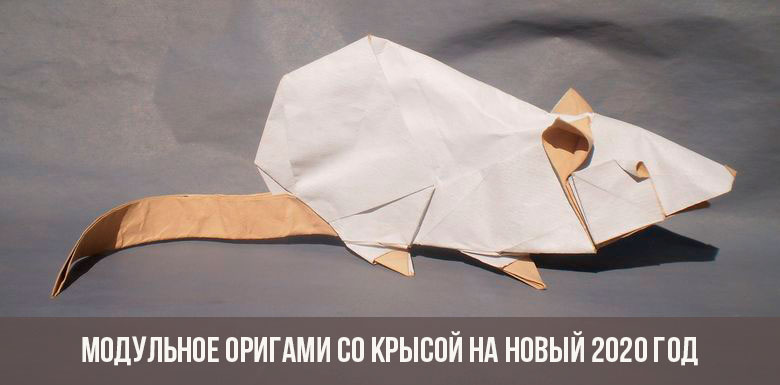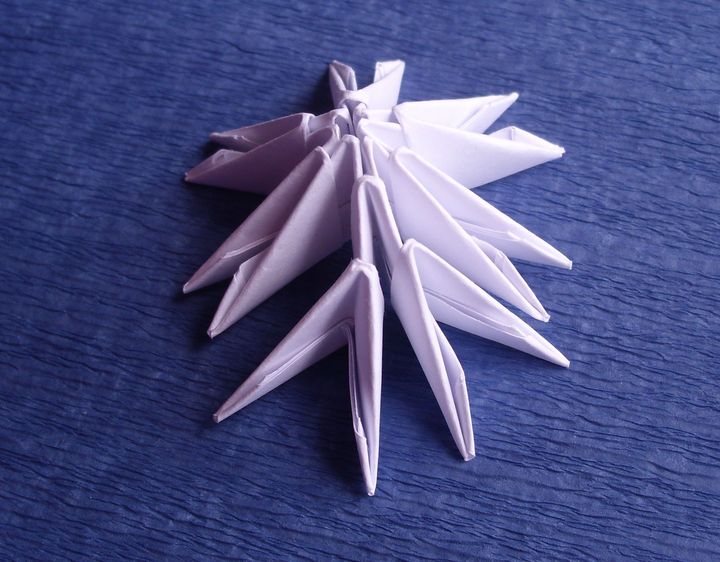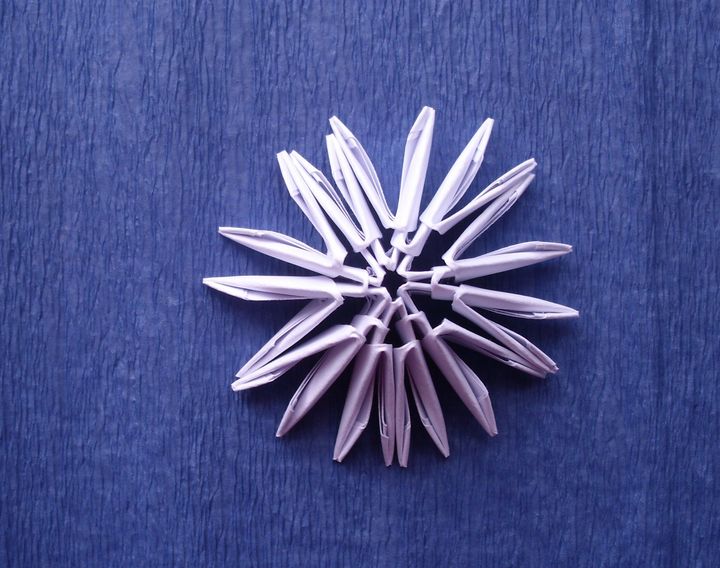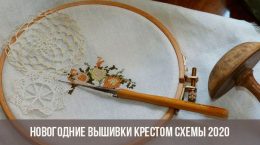Content
To bring harmony to the house in 2020, designers offer to collect some beautiful toys from modular origami for the New Year.
Origami is not just the art of folding paper, but a kind of meditation that allows you to establish a fragile interaction between the inner and outer world. All figures created in this technique have a sacred meaning, they contain the wishes of happiness, prosperity, success and family well-being.
They will become both a stylish accessory and a talisman, bringing beneficial energy to the house, called the Chinese “qi”. If you want to bring good luck and positive changes into your life, you should start by making New Year's origami. For example, fold a rat out of paper. After all, she is a symbol and patron of the coming year according to the eastern zodiac horoscope.
First meeting
Thrilled with the idea to create an origami ornament for the New Year with their own hands, novice masters are lost, not knowing which scheme to choose for a future toy. There are several basic techniques for folding paper, which differ in varying degrees of complexity and type of finished products.
In order not to be disappointed in ancient art, it is better to start dating with a classic origami. Despite the apparent simplicity, it allows you to make very expressive figures that can be used both as pendants on the Christmas tree, and as an original gift wrapping, and as greeting cards.
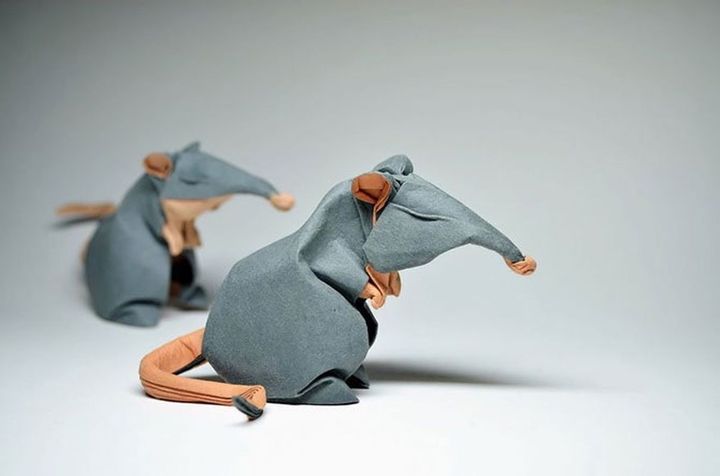
Classic
It is in the classic origami technique that one can make the symbol of the year 2020, the Rat, with one's own hands, especially if children or people who have not previously been engaged in such needlework will participate in the process.
A sheet of double-sided colored paper, kraft packaging or foil is required (the latter option may be optimal, since the year of the metal Rat is coming).
From a square with a side of 15 - 20 cm, we collect the figure according to the following scheme:
- We fold the sheet diagonally, iron it well and open it again. We bend the neighboring sides so that they lie along the formed line, and the opposite peaks touch.
- Now similarly lay the corners on the other side, as shown in the figure.
- Open the workpiece and form the side folds, laying them under 45º. It turns out a "double rhombus."
- The triangle formed by the folds will be bent back. In the middle, we’ll bend it again and then return it to its original position.
- We turn the workpiece over and bend an acute angle “onto ourselves” so that its top drops below the center.
- At the resulting pentagon, lay 2 sides, again turning it into a rhombus.
- Next, we fold our product in half.
- And turn the top of the triangle down. We bend the triangles protruding above the “back”, forming “ears”.
- Finger open the formed "pocket" to give it volume. The lower part is slightly pressed to fix.
- We fold the body, indicating the border of the back.
- We open the figure along the fold line.
- We push the “tail” inward along the crease. Then we open it again and do the opposite movement - out.
- The edges of the “tail” are bent inward, making it thinner.
- If desired, draw a muzzle on the rat.
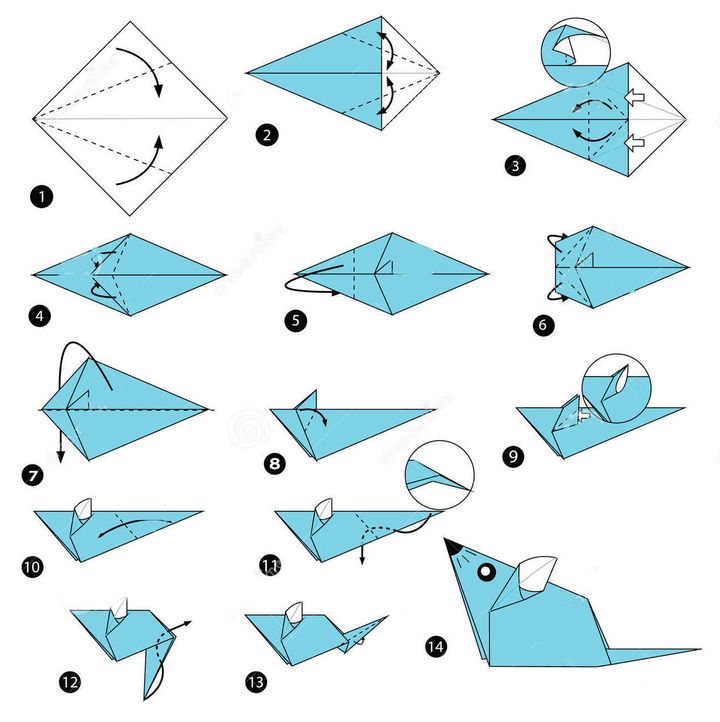
It is very important that the fold lines are clear, without distortion, otherwise the figure will turn out to be messy and skewed.
Modular beauty
Origami from the modules is based on the classic, but it looks much more spectacular. The technique allows you to make voluminous paper sculptures of different sizes - from miniature to gigantic, and they look very realistic. Objects are assembled from the same type of parts - modules, which are embedded in each other and held thanks to the friction force.
The most famous balls are “kusudama”, in which medicinal herbs with a strong aroma were previously placed and hung over the patient’s head.
The rat is a symbol of 2020, in the modular origami technique it will look very original.
Workshops on creating modular compositions
Before you start creating, you need to become more familiar with the very concept of a module. Most often, for paper sculptures, triangular parts are used, which are folded according to the following scheme:
- A4 sheet (or similar proportions, but smaller) are bent in half in length.
- Then do the same in width. But, having outlined the fold line, we straighten the workpiece again.
- We “close” one half of our rectangle so that its long side lies along the central transverse axis.
- We do the same with the second part of the workpiece.
- Turn the part over and bend up the protruding ends.
- Working with the other side of the workpiece again. We remove the "extra" triangles by folding along the line of the main figure.
- Turning the module over again, we bend the lower edges. We lay the triangles inward and again we collect everything together.
- It remains to fold the part in half and it is ready.
There are 3 types of connection modules: only long or short sides, as well as a mixed version. Examples are visible in the presented photo:
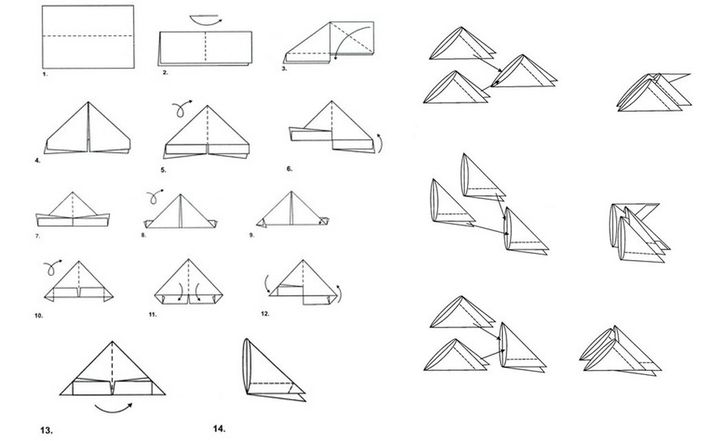
Modular mouse for the little ones
Kids will be happy to assemble an origami rat from modules with their own hands, because it is incredibly simple. Triangles of the same type make up like a “train” and a cute rodent is ready for the New Year! It is best to make it out of colored shiny paper.
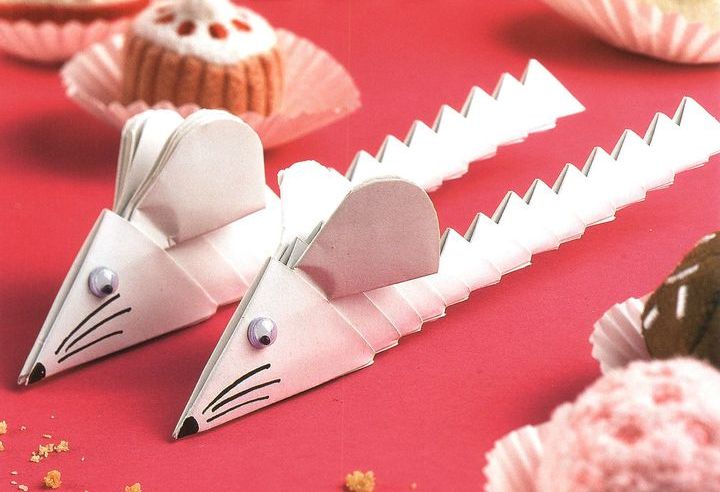
Volumetric sculpture "Symbol of 2020"
Masters who fully comprehended the amazing art of origami, this complex modular composition will bring nothing but pleasure. Work will have to be long and painstaking, but assembling such sculptures is an excellent remedy for stress and a bad mood.
You will need:
- paper: for printer, A4 format and pink color (crepe possible);
- toy nose and eyes;
- Moment glue is transparent.
To get the right module, an A4 sheet needs to be reduced by 5 times. The size of the blank rectangle is 5x3.5 cm.
The starting 1 row is formed of 2 modular “triples” connected in pairs.
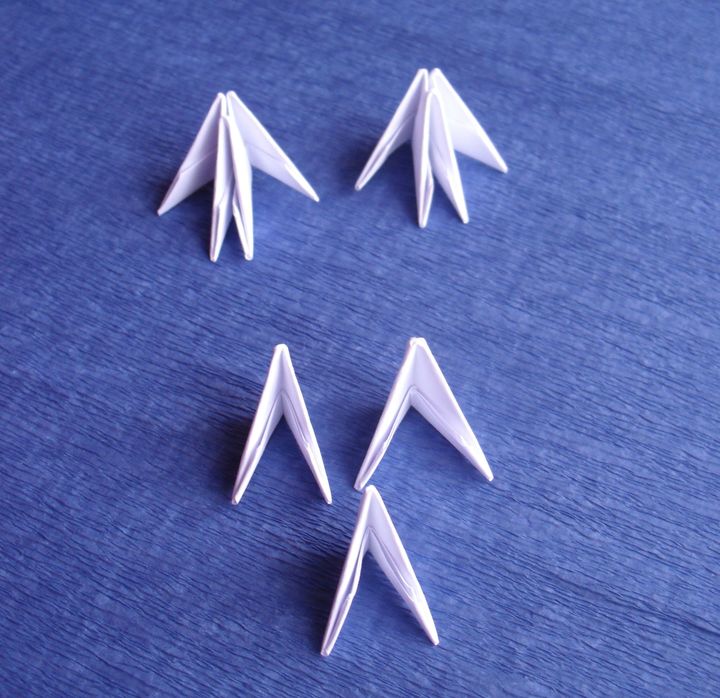
We fasten our "flower" with the following modules - and the 2nd row is ready.
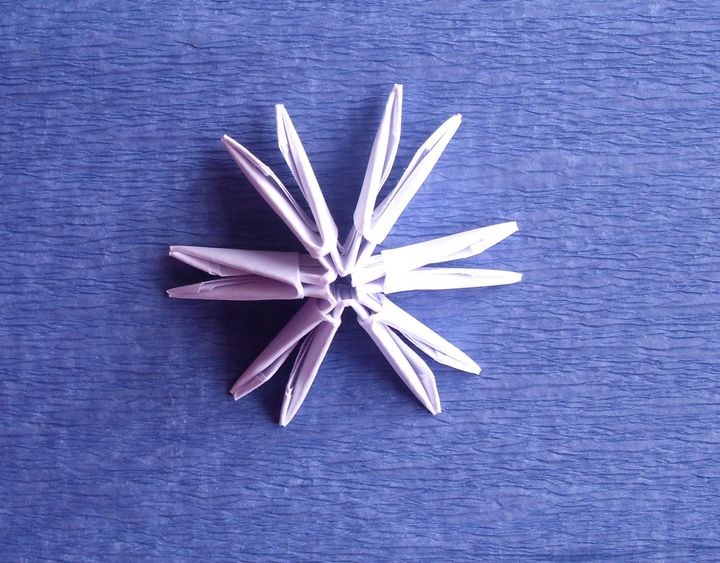
Next, add each of the already connected parts 2 more. In total, in the 3rd row there are 12 components.
We collect the next 2 tiers in the same way. They also have 12 parts. Reaching the 5th row, we turn over the future sculpture and begin to fasten the triangles in a checkerboard pattern.
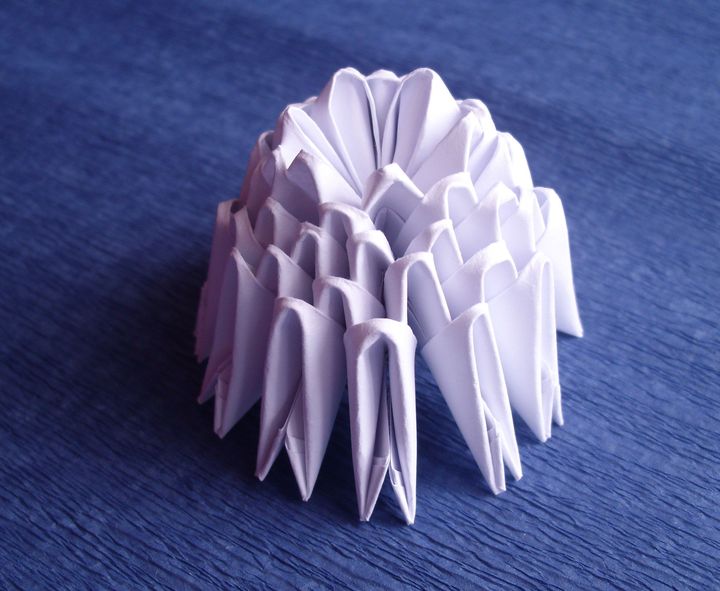
We continue this assembly to the 13th row. Then we make a tier of modules inserted with the short side. Thus, the rounding of the torso of the rat begins.
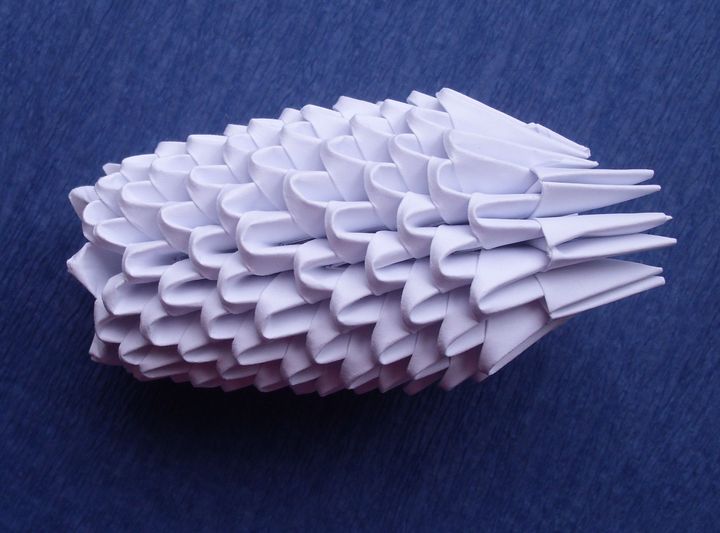
From the 15th to the 18th row, we use the connection along the long side. We finish the figure with 6 details, putting them on the 2 previous ones at once.
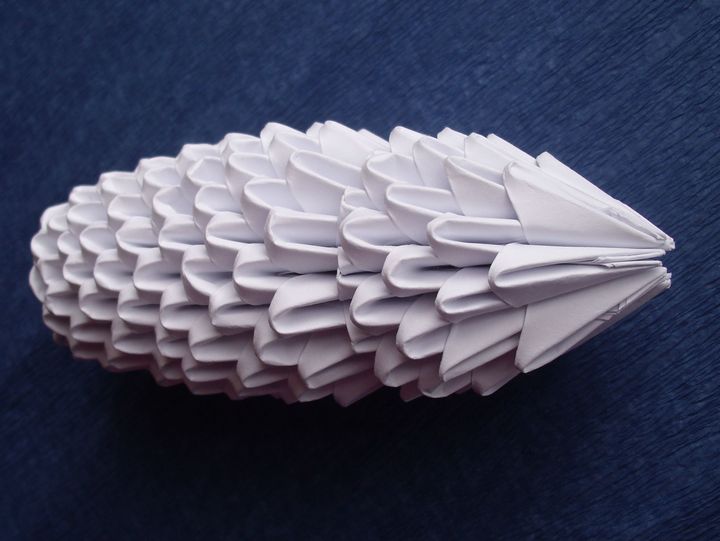
Next, we put the ears out of pink paper
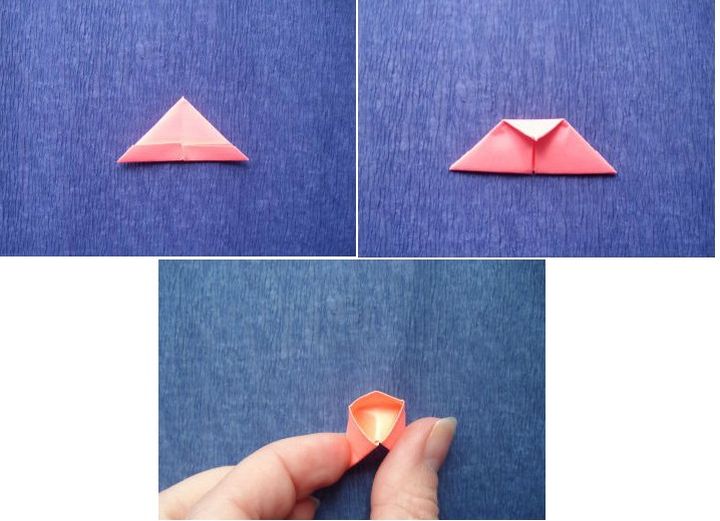
And glue to the head. As well as the eyes and nose, which are usually used for soft toys. Paws are made of 4 modules. And the tail is from a spiral of paper strip.
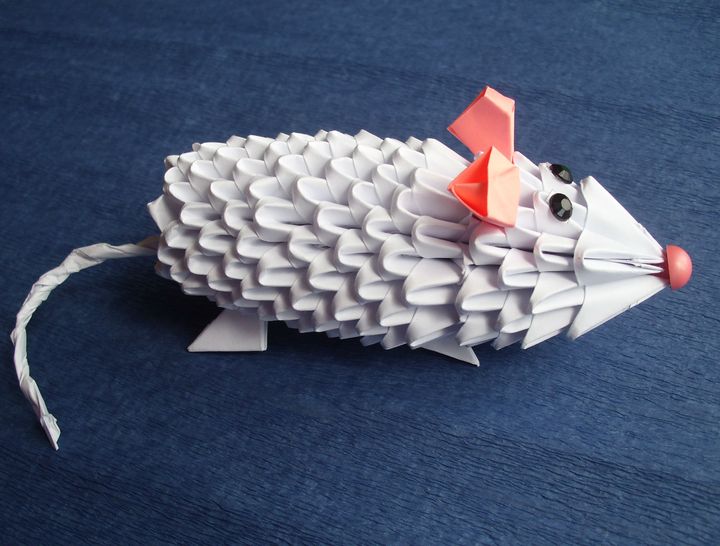
Carried away by modular origami, it is usually difficult to stop. Having mastered the already known patterns, you can go to the experiments and create your own variations of three-dimensional figures.The stock of creative ideas here is truly inexhaustible.
A bit of history
Classical origami, as historians suggest, originated in China, almost simultaneously with the invention of paper. The figurines folded in a special way were used in religious rites, and only representatives of the upper classes were engaged in their manufacture. But this art reached its peak in Japan, after in 610, thanks to the wandering Buddhist monk Dan Ho, the secrets of paperwork became known here.
Masters of the "Land of the Rising Sun" painstakingly developed the technique of folding the figures, bringing it to perfection. They developed complex symbolism, endowing paper products with their secret, mystical language. With the help of figures, the Japanese aristocracy communicated among themselves, expressing a wide range of feelings - from friendly disposition to passionate love. In addition, the products were used in healing practices - just remember the world-famous story about paper cranes that bring health and longevity.
In the XX century, the outstanding master Akiro Yoshizawa developed a unified system of conventional signs, according to which paper products can be easily folded without additional explanations. Today, origamiists around the world use it. In Europe, paper figures were made back in the Renaissance, but in the 19th century, after becoming acquainted with Japanese samples, this art received a powerful impetus for development.
How to make a rat from modules: video
Read also:

